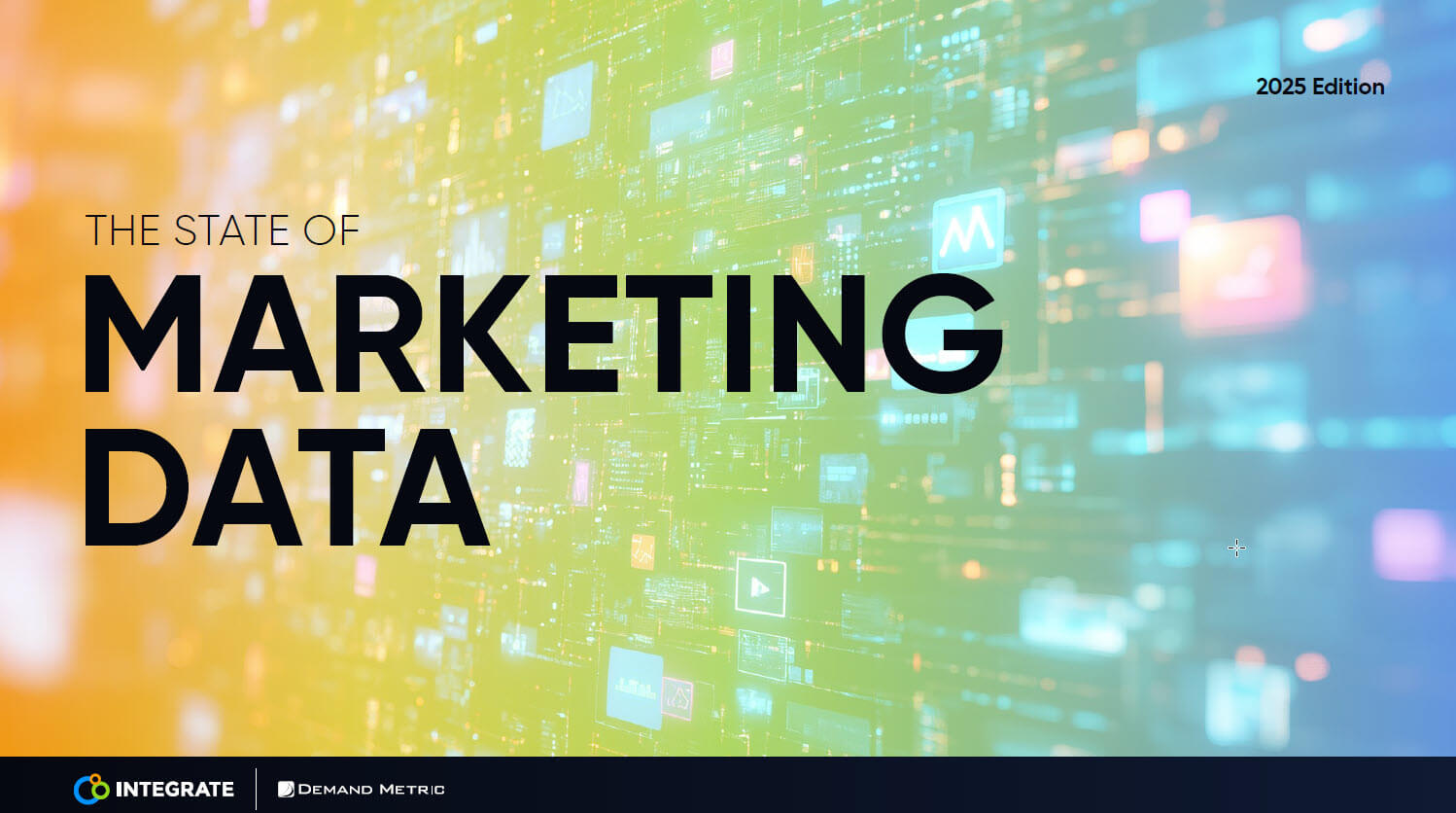Remote Work Amidst a Global Pandemic
Like nearly every other global technology organization, we made the decision to send our employees home in mid-March due to rising concerns over COVID-19. At the time, none of us could have anticipated that nearly five months later, we’d still find ourselves as a fully distributed remote workforce. Yet here we sit, continuing to run our day-to-day business from 250 individual bedrooms, home offices, dining room tables, and backyards.
Prior to COVID-19, Integrate was proud to support both an in-office and remote workforce, with most of our employees working in one of four offices in AZ, MA, AL and the UK, and nearly one-third of our employees working from home offices. We recently spent some time catching up with a few of our employees to better understand how they’re adjusting in this new world of work, where every day can be mistaken for Groundhog Day and if you’re not careful you just might find yourself at your “desk” 24/7.
We spoke with a cross-section of our employees. We figured that those employees who were remote at the start of COVID-19 wouldn’t feel much different about their working environment now, but to be sure, we spent some time with Denver-based VP of Technical Consulting, Justin Eisner. Justin has been working fully remote for some time now as has most of his team. On the other hand, Ivanna Nunez, Sr. Campaign Specialist made a move at the start of lockdown, going from Massachusetts where she was an in-office employee in our Hopkinton office to Florida where she is now fully remote. As a new mom, Ivanna wanted to be closer to family. We also spoke with Product Manager, Marianne Franco and Software Engineering Team Lead, Bob Erikson. Marianne and Bob are both based regularly in our Phoenix office and now find themselves working from home full-time until our offices re-open safely.
Here are four things we learned about remote work from this diverse, group of employees:
1.) Remote productivity isn’t just possible; it’s probable. We had no idea what the productivity impact might be when everyone found themselves working from home, but our employees tell us they’re more productive than ever. This proves it’s not where your desk is located that drives your ability to get your work done. For Bob and Marianne who once started and ended their days with long commutes, working from home has given them the gift of time. As Marianne told us, “I think I get more done because I don’t have to take time to get ready and drive to the office. I can just get up and start working. I can be available for meetings earlier which helps with the team in the UK as well as those team members who are two to three hours ahead of me on the East coast. So, it feels like there are a few more working hours in my day.”
Bob likes the fact that he gets more time with his seven-month old son, Michael, now starting his morning with a stroller walk rather than an hour-long commute. “Spending a little extra time with Michael is great,” he told us, “and really allows me to put all my effort behind my work when I sit down to focus, allowing me to work more deeply on what I’m doing. I just don’t feel as rushed or stressed without the commute.”
Staying motivated, present, and continuing the same practices we had when working in the office, are key to ensuring employees don’t fall off the productivity wagon. Bob shared, “We’ve continued our daily stand-ups in engineering just as we did every day in the office. That has helped keep us focused and it’s helped with bringing new people onto the team. We’ve also continued our weekly engineering leadership meetings and quarterly engineering all hands. We weren’t all in always in person for these meetings but the regularity of these kinds of things keeps us focused on what we need to accomplish. So do our OKRs and regular check-ins.”
2.) Leadership has taken on a whole new meaning. Ivanna Nunez, a new mother, says this about her new manager, Nichole McGlothlin , “Having weekly one-on-one’s with her is so helpful. We can brainstorm solutions to challenges I’m having at work. But it’s more than that. With Nichole, it’s the personal touch she has added, asking about my son or just checking on how I’m doing personally. That makes all the difference in the world.”
There’s no doubt that leadership in the COVID-era has changed. Our employees are living and working in uncertain times. We have parents dealing with the uncertainty of school for their children; they are husbands and wives dealing with spouses who may be out of work; they are singles now living and working in isolation; they are employees who have been diagnosed with COVID-19 themselves and are facing weeks or months of recuperation time. Said best by HBR in their April 13, 2020 article, What Good Leadership Looks Like During this Pandemic, “Leadership in an uncertain, fast-moving crisis means making oneself available to feel what it is like to be in another’s shoes – to lead with empathy.”
Staying in touch is an important aspect of fully remote leadership. As Gallup reminds us in their article, COVID-19 Has My Teams Working Remotely: A Guide for Leaders, “Employees who are accustomed to working in-house may feel cut off from the resources, information or relationships they need to do their jobs well, so plan for more conference calls. It’s OK to pad socializing into the timeframe; indeed, it may be vital for people who need lots of interaction to keep their energy up.”
Justin Eisner agrees, telling us “When you’re remote, and your team is remote, there’s a keeping in touch aspect that’s very important. It would be somewhat easy to find yourself on a Friday at 1pm and realize you didn’t talk to someone all week. So taking the extra time to ensure you are touching base, constantly keeping in touch, ensuring that you know what someone is working on and how they are progressing, hearing them out, these are all important factors we face as leaders now that our teams are fully remote.”
3.) Unplugging is mandatory. In May, Integrate CEO, Jeremy Bloom made the decision to institute Flex Friday’s, allowing Integrate employees to sign off their computers on Friday afternoons by 1:00pm in their local time zone. While teams worked together to ensure business needs were met, the company has made it possible for virtually everyone to have at least some time off on Friday afternoons. By far, this small act went further than anything else, in ensuring our teams have not burned themselves out during this time.
These trying times have meant higher burnout for many workers and this Bloomberg article finds people are working longer than ever, disrupting any sort of work-life balance they tried to achieve. Speaking with our Integrate employees, they were all aware of the challenges and spoke openly about working hard to shut off in the evenings and on weekends. As a manager, Justin Eisner told us, “With my team, I try to constantly remind them that if I send an email late in the day or on the weekend, it doesn’t mean they have to reply, but if they do, I always respond to them and tell them to stop working. I encourage them to turn off at a decent time. Go have dinner. Go to bed. Remind them to take advantage of Flex Friday’s. That’s probably one of the harder things about remote work,” he said, sighing, “you always end up working more.”
4.) Human connection is the missing ingredient. By far, the number one thing all our employees told us, was that they miss the human connection. Whether this was the ability to swing by someone’s desk, grab lunch or a drink at happy hour, or travel in for a week of brainstorming and working together, it’s clear that people just miss being with other people. And while Zoom is a great alternative for every day working, it just doesn’t cut it when it comes to the close relationships that are developed by spending time together at a whiteboard.
Certainly, we weren’t surprised by this feedback, but it does help put things in perspective when the world does re-open. Today our leadership team is wrestling with questions like: Should we keep all four offices? Do we need them if our people are just as productive as they were in the office but can now do so from home? What’s the right combination of time in the office and flexibility to work from home?
Justin may have summed this up best for us when he said, “A hybrid approach is great. If employees can be in the office two to three days a week and remote the rest of the time, I think it’s the ideal experience. The employee can look at their day and decide what works better for them to be the most productive on any day. But what’s Ideal for the employee experience is not always great for the company, and it gets tricky is if the company gets caught in the ‘we don’t want to tell people they have to go into the office, but we are paying for the office’ position.”
No doubt many organizations will be facing this same question when it’s safe to reopen their offices and the expectation is that employees file back in, either full-time or in some hybrid model. What we’ve learned at Integrate is that office or not, what is important, is that employees have somewhere to meet, work, create, socialize, and build together. There is no substitution for the time we spend in each other’s company.
—
Natalie Dopp
Chief People Officer, Integrate









